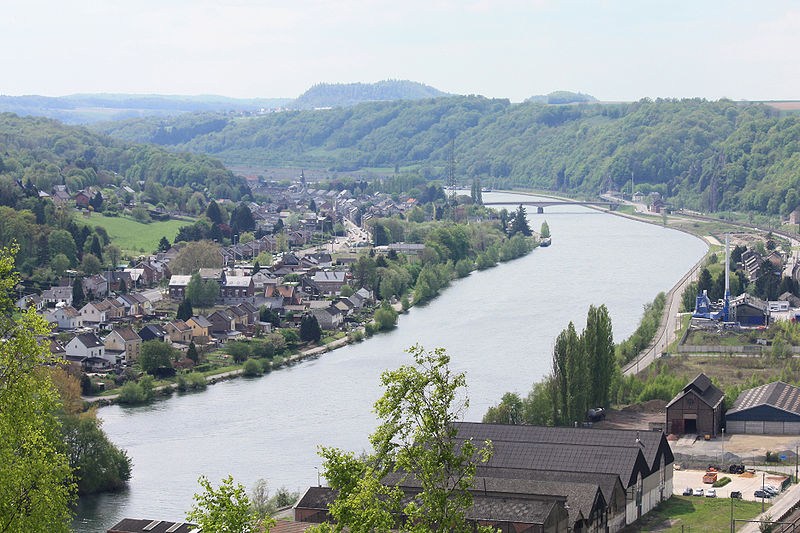If the flow of the Meuse decreases even further in Liège, Flanders will end up in a crisis, De Standaard reports.
In Flanders, the Meuse has been watched with suspicion for weeks. Is the level dropping below a critical point? Today, the Drought Commission is examining the situation. Liège is where it is happening. The drain there has recently been fluctuating between 35 and 40 cubic metres - 35,000 to 40,0000 litres per second.
"That may sound like a lot, but the average flow over the years there has been 250 cubic metres a second", said Koen Maeghe, head of the control department of the Flemish Waterway, the body that manages the navigable waterways.
Luckily, the Meuse flow rate rose a little due to the rainfall of the past few days – especially in the valley of The Ourthe, a tributary of the Meuse. "A welcome respite," remarked Professor Patrick Willems, hydraulic engineer at KU Leuven.
Why the Meuse is so important
Firstly, 40% of our drinking water comes from it.
Additionally, In Liège, The Ourthe flows into the Meuse, which brings water from other rivers and from the High Fens. A little further on, near Monsin, the Albert Canal branches off. This is considered to be the economic artery of Flanders. It is the most important inland navigation route, and the companies along it draw water from the canal to be able to function.

The fire, which broke out in Scalyn near the river Meuse, burned for three hours. Credit: Wikimedia Commons.
Apart from Flanders, Brussels is also strongly dependent on the Meuse. The Brussels drinking water company Vivaqua in Tailfer (Profondeville) gets an average of 40% of its production from the river. This amounts to a maximum of 240,000 cubic metres per day. Due to the drought, that intake has been limited to 90,000 cubic metres today. "That is sufficient for the time being," said Saar Vanderplaetsen, spokeswoman for Vivaqua. "Despite the hot summer, consumption is surprisingly low."
Last week, the Drought Commission gave the Flemish Waterway a mandate to take extra measures, should the situation deteriorate further. Due to the recent stabilisation of the flow, it does not look as if heavy interventions will be necessary.
What can be done?
The Meuse originates in France, on the Langres plateau. It is fed mainly by the rainwater that falls in its catchment area and is collected via brooks and tributaries. In Belgium, it is mainly the rain that falls on the Fens and in the Ardennes that feeds the river. This is a gradual process, which also takes place in the soil and takes months.
"That area is the sponge of the Meuse. Under normal circumstances, the sponge is saturated after the winter and can release water throughout the summer. But if the spring is dry, as it was this year, and a dry summer follows, the sponge gets squeezed out faster. The end of August and September to October are critical months." explained Maeghe.
Related News
- Water companies call for better regulation of Meuse drinking water
- For once, Belgium is begging for rain
According to climate models, by the end of the century the Meuse flow in summer could drop by half to 70%. The drinking water companies of the Riwa-Maas association recently addressed the fact that the drought also increases the risks of pollution,
For Patrick Willems, tinkering with the weirs and retention basins is 'the easy solution'. Ideally, there should also be interventions that increase the natural buffering. Think of an expansion of the marshy nature, such as the High Fens. But just like in Flanders, this will be the most politically difficult measure in Wallonia.

